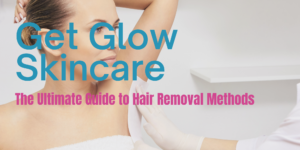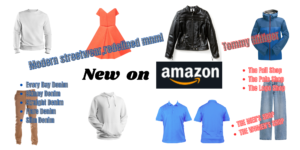[As an Amazon Associate, I earn from qualifying purchases at no additional cost to you.]
In the ever-evolving world of grooming, men’s haircare has become an essential aspect of personal hygiene and style. From choosing the right products to maintaining a well-groomed beard, there’s a lot to consider when it comes to looking after your locks. In this blog, we’ll dive into the various types of men’s hair, how to choose the right products, establish a hair care routine, and provide tips for maintaining both a full head of hair and a bald head. Additionally, we’ll explore the art of beard maintenance, covering the essential rules and best practices.
Different Types of Men's Hair
Understanding your hair type is a crucial step in tailoring an effective grooming routine. Men’s hair can be broadly categorized into four main types: straight, wavy, curly, and kinky.
Straight Hair: Characterized by a smooth texture and naturally sleek appearance, straight hair tends to be less prone to frizz. This hair type often benefits from lightweight styling products that enhance shine without weighing it down.
Wavy Hair: Wavy hair features gentle waves and offers a versatile canvas for various styles. Balancing moisture is key for maintaining the texture, making hydrating shampoos and conditioners essential. Medium-hold styling products help define waves without stifling movement.
Curly Hair: Curly hair comes in a spectrum of curls, from loose to tight coils. It requires extra moisture to combat dryness and frizz. Sulfate-free, hydrating products are ideal, and using a wide-tooth comb or fingers rather than brushes helps maintain curl integrity.
Kinky Hair: Kinky hair has a coiled and tightly curled pattern. This hair type is prone to dryness, making deep conditioning treatments and leave-in products crucial. Gentle detangling and protective styles help minimize breakage and promote healthy growth.
Identifying your hair type empowers you to choose products tailored to its specific needs, ensuring a personalized approach to men’s haircare.
Choosing Hair Care Products for Men
Selecting the right hair care products is pivotal in achieving and maintaining healthy, well-groomed locks. Consider the following factors to make informed choices:
Hair Type: Understanding your hair type—straight, wavy, curly, or kinky—guides product selection. Each type has unique needs, and using products specifically formulated for your hair type ensures optimal results.
Scalp Condition: Take into account your scalp’s condition, whether it tends to be oily, dry, or prone to dandruff. Choose shampoos and conditioners designed to address these specific concerns for a balanced and nourished scalp.
Ingredients: Opt for products with high-quality, natural ingredients. Avoid harsh chemicals like sulfates and parabens, as they can strip the hair of its natural oils, leading to dryness and damage.
Styling Preferences: Consider your preferred hairstyle and the level of hold or flexibility you desire. Different styling products, such as pomades, waxes, or styling creams, offer various levels of hold and shine to suit individual preferences.
Lifestyle Factors: Adapt your hair care routine to your lifestyle. If you’re active and sweat frequently, choose a clarifying shampoo to remove build-up. Conversely, if your hair is exposed to environmental stressors, opt for products with protective and hydrating properties.
By customizing your product selection based on these considerations, you ensure that your hair care routine caters to the unique needs of your hair, promoting its health and enhancing its natural luster.
Hair Care Routine
Establishing a consistent and effective hair care routine is essential for promoting healthy, well-groomed hair. Follow these steps to create a personalized routine:
Shampooing: Use a sulfate-free shampoo suitable for your hair type and scalp condition. Washing frequency depends on your lifestyle and hair needs, but 2-3 times a week is a general guideline. Massage the shampoo into your scalp to cleanse thoroughly.
Conditioning: Apply a conditioner tailored to your hair type, focusing on the mid-lengths and ends. Let it sit for a few minutes before rinsing. For added moisture, use a deep conditioning treatment once a week to nourish and repair.
Towel Drying: Gently pat your hair dry with a soft, microfiber towel to avoid causing friction and breakage. Avoid vigorous rubbing, as wet hair is more prone to damage.
Styling: Apply styling products based on your desired look. Use a heat protectant if using hot styling tools and distribute products evenly to avoid clumps. Choose styling products with a hold level appropriate for your hairstyle.
Trimming: Regularly trim your hair every 6-8 weeks to prevent split ends and maintain a neat appearance. Professional trims also encourage healthy hair growth.
Protection: Protect your hair from environmental stressors. If exposed to the sun, wear a hat to shield your hair from UV rays. In extreme weather, use products with protective properties, such as those with UV filters.
By following a tailored routine and incorporating these steps into your grooming habits, you’ll not only enhance the health and appearance of your hair but also establish a sustainable regimen that aligns with your unique needs and preferences.
Good Hair Regimen
A well-rounded hair care regimen is the cornerstone of maintaining healthy, vibrant hair. Here’s a comprehensive guide to crafting an effective hair care routine:
Regular Trims: Schedule regular haircuts every 6-8 weeks to prevent split ends and maintain a clean, polished look. Trimming promotes healthier hair growth by removing damaged ends.
Protective Styling: When engaging in activities that may cause friction or damage, opt for protective styles such as braids or buns. This helps minimize breakage and preserves the integrity of your hair.
Balanced Diet: Nourish your hair from within by maintaining a balanced diet rich in vitamins, minerals, and protein. Foods like salmon, nuts, and leafy greens contribute to the overall health of your hair.
Hydration: Stay hydrated to ensure your body provides sufficient moisture to your hair. Dehydration can lead to dry, brittle strands, so aim for the recommended daily water intake.
Weather Adaptation: Adjust your hair care routine based on the seasons. In colder months, use hydrating products to combat dryness, while in warmer months, focus on protecting your hair from sun exposure and humidity.
Minimal Heat Styling: Limit the use of heat styling tools to prevent heat damage. When using such tools, apply a heat protectant to shield your hair from high temperatures.
Protective Products: Incorporate leave-in conditioners, serums, or oils to add an extra layer of protection and nourishment to your hair. These products help combat frizz, add shine, and maintain moisture balance.
Avoid Overwashing: While cleanliness is crucial, overwashing can strip your hair of natural oils, leading to dryness. Find a balance that suits your hair type and lifestyle, aiming for 2-3 washes per week.
By integrating these practices into your routine, you not only care for your hair externally but also promote its health and vitality from the roots. Consistency and mindfulness are key to a successful hair regimen that adapts to your unique needs.
Product to Keep Hair in Place for Men
Choosing the right styling product is essential for maintaining a polished and well-groomed appearance. Here are some popular options to keep your hair in place:
Pomade: Ideal for achieving a sleek, shiny finish, pomade provides a strong hold without the stiffness of traditional gels. It’s suitable for various hairstyles and hair types, offering flexibility and control.
Hair Wax: Wax is a versatile product that provides a flexible hold, making it suitable for textured styles and defining layers. It adds a natural shine without weighing the hair down.
Styling Cream: Styling creams are lightweight and work well for a more relaxed, casual look. They provide a medium hold, making them suitable for a variety of hairstyles while maintaining a natural appearance.
Hair Gel: For a firm hold and a sleek finish, hair gel is a classic choice. Modern formulations offer improved flexibility and a more natural appearance, making them suitable for both casual and formal styles.
Clay: Clay-based products are excellent for a matte finish and a textured, tousled look. They provide a strong hold, making them ideal for modern, messy hairstyles.
Hairspray: Hairspray is a versatile option for locking in your desired style and providing long-lasting hold. It’s particularly useful for styles that require staying power, such as updos or intricate designs.
When selecting a product, consider your hair type, preferred style, and the level of hold you desire. Experiment with different options to find the product that works best for your individual needs and complements your personal style.
Best Oil for Hair
Nourishing your hair with the right oils is crucial for maintaining its health, shine, and manageability. Here are some top choices for the best oils for hair:
Argan Oil: Known as ‘liquid gold,’ argan oil is rich in vitamins, antioxidants, and fatty acids. It hydrates and softens the hair, reduces frizz, and promotes a healthy shine. It is suitable for all hair types, providing a lightweight and non-greasy finish.
Jojoba Oil: Closely resembling the natural oils produced by the scalp, jojoba oil is easily absorbed. It helps moisturize the hair, prevent breakage, and soothe the scalp. Jojoba oil is especially beneficial for those with dry or damaged hair.
Coconut Oil: A versatile oil with numerous benefits, coconut oil is known for its ability to penetrate the hair shaft, providing deep conditioning. It helps prevent protein loss, reduces frizz, and adds a lustrous shine. Coconut oil is suitable for most hair types.
Olive Oil: Rich in antioxidants and vitamin E, olive oil is excellent for moisturizing and strengthening the hair. It helps combat dryness, reduces split ends, and adds elasticity. Olive oil is particularly beneficial for dry or damaged hair.
Sweet Almond Oil: Lightweight and hypoallergenic, sweet almond oil nourishes the hair without weighing it down. It promotes softness, adds shine, and helps prevent hair loss. This oil is suitable for all hair types.
Castor Oil: Renowned for promoting hair growth, castor oil is thick and rich in ricinoleic acid. It strengthens the hair, reduces breakage, and supports a healthy scalp. It is often used as a treatment for thinning hair or hair loss.
When using hair oils, apply a small amount to damp or dry hair, focusing on the mid-lengths and ends. Experiment with different oils to discover which one suits your hair type and addresses your specific concerns, whether it be hydration, shine, or overall health.
Taking Care of a Bald Head
Embracing a bald head requires a simple yet effective care routine to keep the scalp healthy and maintain a polished appearance. Here’s a guide to taking care of a bald head:
Gentle Cleansing: Use a mild, moisturizing cleanser to keep the scalp clean without stripping away natural oils. A gentle daily cleanse helps prevent dryness and irritation.
Exfoliation: Incorporate a weekly exfoliation routine to remove dead skin cells and promote a smooth scalp. Use a gentle exfoliating scrub or a soft brush during your shower to maintain a fresh and clean surface.
Moisturizing: Regularly moisturize the scalp to prevent dryness and flakiness. Opt for a fragrance-free moisturizer or natural oils like jojoba or tea tree oil. Apply a small amount and massage it into the scalp for hydration.
Sun Protection: Shield your bald head from harmful UV rays by wearing a hat or applying sunscreen. Sun protection is essential to prevent sunburn and reduce the risk of skin damage.
Massage: Regularly massage your scalp to stimulate blood circulation and promote overall scalp health. Use your fingertips to gently massage in circular motions, enhancing nutrient flow to the hair follicles.
Professional Shaving: If you choose to maintain a completely bald look, consider regular professional shaves or invest in a quality razor for at-home shaving. Keep the scalp smooth by shaving against the grain for a closer finish.
Embrace Headgear: During colder weather or prolonged sun exposure, wear a hat or beanie to protect your scalp from harsh environmental conditions. Choose breathable fabrics to prevent excess sweating.
Avoid Harsh Products: Steer clear of harsh chemicals and products that may irritate the scalp. Opt for mild, hypoallergenic options to maintain the skin’s natural balance.
Taking care of a bald head is about simplicity and consistency. By incorporating these practices into your routine, you’ll not only maintain a well-groomed appearance but also promote the overall health of your scalp.
Maintaining a healthy and well-moisturized bald head is crucial for both comfort and appearance. While choosing the right oil is important, the application process plays a key role in achieving optimal results. Whether using jojoba oil, tea tree oil, or any other suitable option, the application method is consistent.
To apply oil to a bald head, start with a clean and dry scalp. Gently massage a small amount of the chosen oil into the scalp using circular motions. This massage not only ensures even distribution but also stimulates blood circulation, promoting a healthy and nourished scalp. Pay special attention to any areas prone to dryness or irritation, ensuring the oil is applied thoroughly.
Consider incorporating oil application into your self-care routine, perhaps after a shower or before bedtime. Applying oil to a slightly damp scalp can enhance absorption, allowing the skin to reap the full benefits of the chosen oil. Additionally, the ritual of massaging the oil into the scalp not only provides physical benefits but also offers a moment of relaxation and self-care. Whether you choose a single type of oil or opt for a blend, regular and mindful application will contribute to the overall health and appearance of your bald head.
Maintaining Your Beard
A well-groomed beard can significantly enhance your overall appearance and personal style. To ensure your facial hair looks its best, follow these key steps in maintaining your beard:
Regular Trimming: Set a consistent trimming schedule to keep your beard tidy and well-shaped. Whether you’re maintaining a shorter beard or cultivating a longer, more intricate style, regular trims prevent split ends and promote a neat, polished look.
Cleansing: Just like the hair on your head, your beard requires regular cleansing to remove dirt, oil, and food particles. Use a mild beard shampoo or a gentle, sulfate-free cleanser to keep your facial hair clean without stripping away natural oils.
Conditioning: Beard hair tends to be coarser than the hair on your head, so using a beard conditioner is essential. This helps soften the hair, making it more manageable and reducing itchiness. Apply the conditioner and leave it on for a few minutes before rinsing.
Moisturizing: Keep your beard and the skin beneath it moisturized to prevent dryness and flakiness. Beard oils and balms are excellent choices for hydrating both the hair and the skin, providing a healthy shine and promoting overall beard health.
Combing and Brushing: Regularly comb or brush your beard to remove tangles and distribute natural oils. This helps in maintaining a smooth and well-groomed appearance while also training the hair to grow in your desired direction.
Shaping: Define the boundaries of your beard by maintaining a clean neckline and cheek line. This enhances the structure of your beard and ensures a polished, intentional look.
Patience and Growth: Embrace the natural growth process of your beard, especially during the initial stages. Allow it to grow freely before shaping it into your desired style. Patience is key in achieving a fuller, more robust beard.
Professional Grooming: Consider visiting a barber for professional grooming and shaping, especially if you’re experimenting with a new beard style or maintaining a longer length. A skilled barber can offer valuable insights and ensure precision in your beard maintenance routine.
By incorporating these beard maintenance practices into your grooming routine, you’ll not only achieve a well-kept and stylish beard but also promote the health of your facial hair and the skin underneath. A well-maintained beard is a testament to your grooming prowess and personal style.
Achieving and maintaining great hair and beard health is a combination of understanding your hair type, choosing the right products, and adopting a consistent grooming routine. Whether you have a full head of hair or embrace a bald look, these tips and guidelines will help you master the art of men’s haircare and leave you looking and feeling your best.































